
Update March 06, 2007: I found more pics of this bird from December 20th - click here to see them.
This gull was photographed on December 27, 2006 in the Coastal Plain near Houston and Galveston, Texas NOTE due to very muddy conditions, bare parts colors are unreliable (most birds had mud-caked bills):
This gull is a LBBG/heuglini/YLGU type - presumably an "advanced-type" 2nd-generation or "retarded-type" 3rd-generation:
The adult-type upperpart feathers in the field appeared just a fraction paler than the average LAGU, but the harsh light always makes such assessment difficult. The remaining wing coverts of the "first-generation pattern" type are extensively marked with pale edging and interior areas. It was a stocky, thick-legged gull just a little smaller than an average AMHE - note the full, deep chest and breast tapering to narrow rear end. The remaining older (lowest) tertial(s?) has a classic pattern for 2nd-generation YLGU:- dark center with broad,white subterminal patch that looks almost split, plus some ragged white creeping down the lateral fringes.:
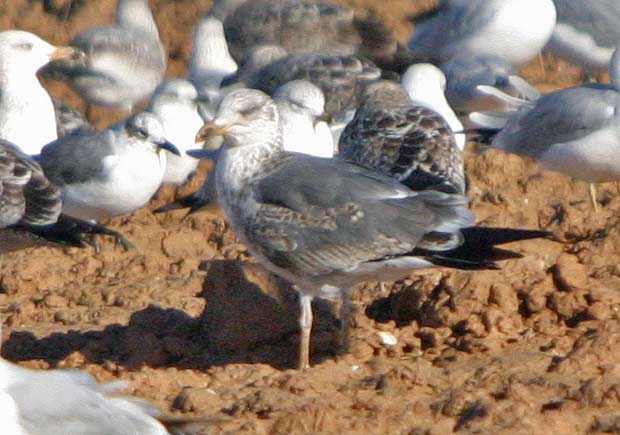
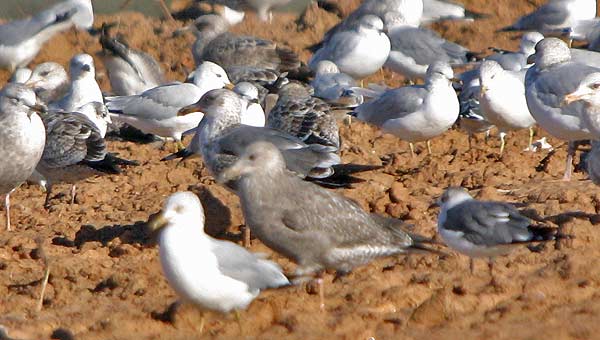

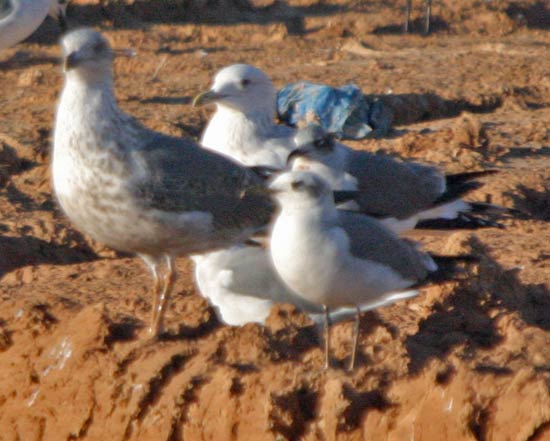
Comparing color tones is notoriosuly prone to error, as anyone who has tried one of those trick color displays can attest: if you surround the same color/tone with darker colors on one board, and lighter colors on another board, everyone will swear that, in adjacent comparison, the one surrounded in lighter colors is darker...
So below I've snipped a small square of gray from the target bird and placed it into approximately the same position on the two LAGUS. I'll wager that when looking at the above image you'd feel that the target bird is much closer to the darker LAGU than the paler one (the difference between them probably accentuated by different angles to the light); my crude test below suggests that the reverse might be true... NOTE that a small difference in angle to the light can make a big difference in tone perception, so this demonstration is merely to show that sometimes the eye needs help in making such comparisons:

In flight the bird looked much too pale for LBBG (as it does in these images):
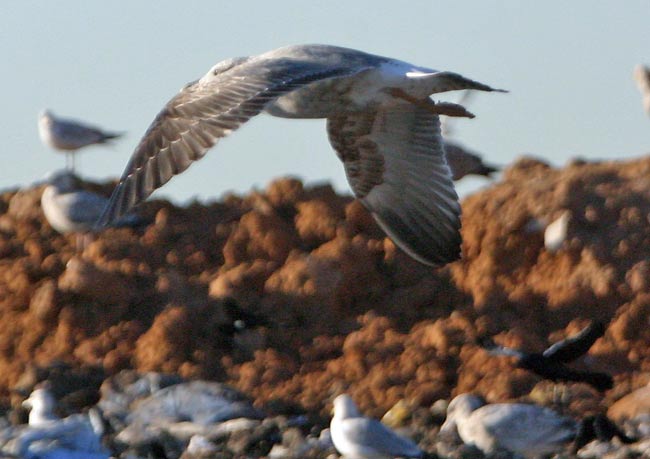
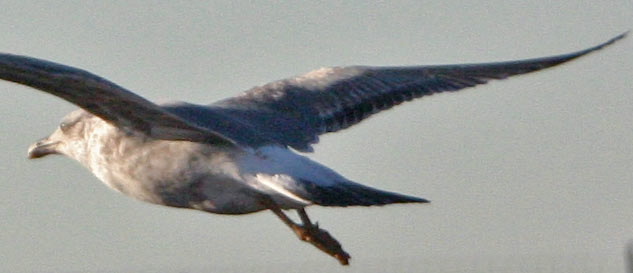
Note the bulk of the wings:
